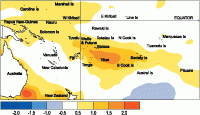Water quality in Pigeon Creek

Last year, the Inchbonnie (Lake Brunner) catchment became the fifth study catchment in a project funded jointly by the New Zealand dairy industry and MAF’s Sustainable Farming Fund. The project is a long-standing dairy industry initiative and highlights best management practices for sustainable farming.
The five catchments are:
- Toenepi Stream (Waikato)
- Waikakahi Stream (Canterbury)
- Bog Burn (Southland)
- Waiokura (Taranaki)
- Inchbonnie
The Inchbonnie catchment has an area of 600 hectares and drains to Pigeon Creek. We have been analysing fortnightly water samples to create a reference data set. Overall, pollutant concentrations are similar to those in other dairy streams around the country, but phosphorus and faecal bacteria are higher because of the large amount of surface runoff in this high rainfall region. The next step is to test ways to reduce these loads.
The study catchments involve many people, notably the farmers, the dairy cooperatives (Fonterra, Westland Milk Products), NIWA, AgResearch, Dexcel, and regional councils.
